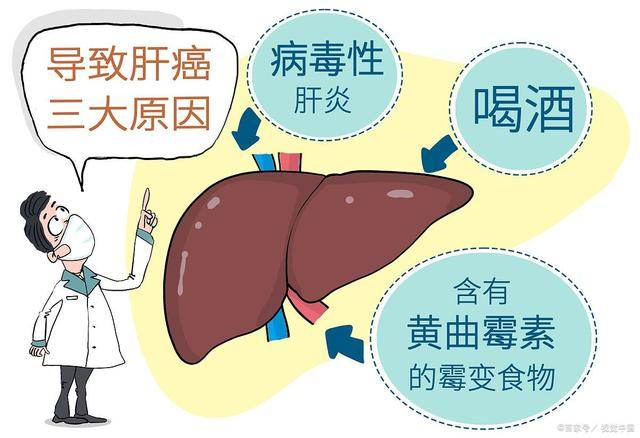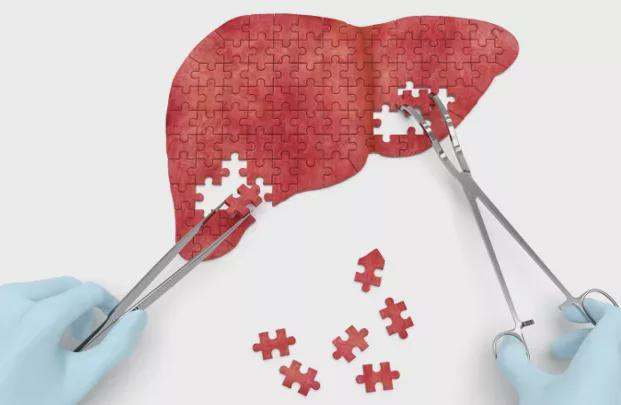一、肝癌概述
肝癌是全球范围内常见的恶性肿瘤之一,其发病率和死亡率均较高。肝癌主要包括原发性肝癌和继发性肝癌。原发性肝癌是指肝脏自身细胞发生的癌变,主要包括肝细胞癌(HCC)和胆管细胞癌。继发性肝癌则是指其他器官的癌细胞通过血液或淋巴系统转移到肝脏。

二、肝癌的流行病学
肝癌的发病率在全球范围内存在显著差异。根据世界卫生组织的数据,肝癌在亚洲和非洲的发病率较高,尤其是在中国、印度和非洲的部分地区。在美国,肝癌的发病率也在逐年上升,尤其是在非酒精性脂肪性肝病(NAFLD)和非酒精性脂肪性肝炎(NASH)患者中。
三、肝癌的病因
肝癌的发病原因较为复杂,主要包括以下几方面:
1. 病毒性肝炎:乙型肝炎病毒(HBV)和丙型肝炎病毒(HCV)感染是肝癌的主要病因。慢性乙型肝炎和丙型肝炎患者发生肝癌的风险显著增加。
2. 肝硬化:肝硬化是肝癌的重要危险因素,约80%的肝癌患者伴有肝硬化。
3. 代谢性疾病:非酒精性脂肪性肝病(NAFLD)和非酒精性脂肪性肝炎(NASH)与肝癌的发生密切相关。
4. 其他因素:长期饮酒、黄曲霉毒素暴露、遗传因素等也与肝癌的发生有关。

四、肝癌的症状与诊断
肝癌早期通常无明显症状,随着病情进展,可能出现以下症状:
1. 肝区疼痛:右上腹或中上腹持续性隐痛、钝痛或胀痛。
2. 全身症状:乏力、消瘦、食欲减退、恶心、呕吐等。
3. 黄疸:皮肤和巩膜黄染。
4. 腹水:腹部膨胀,有液体积聚。

肝癌的诊断主要依靠影像学检查和血清学标志物检测。常用的影像学检查包括超声、CT和MRI。血清学标志物中,甲胎蛋白(AFP)是最常用的指标,但其特异性有限。
五、肝癌的治疗
肝癌的治疗方法多样,主要包括手术切除、肝移植、局部消融治疗、经动脉化疗栓塞(TACE)、靶向治疗和免疫治疗。
1. 手术切除:是肝癌的首选治疗方法,适用于早期肝癌患者。
2. 肝移植:适用于肝功能失代偿的肝癌患者。
3. 局部消融治疗:包括射频消融、微波消融等,适用于小肝癌。
4. 经动脉化疗栓塞(TACE):是中晚期肝癌的主要治疗方法。
5. 靶向治疗:如索拉非尼、仑伐替尼等,可延长患者的生存期。
6. 免疫治疗:如阿特珠单抗联合贝伐珠单抗等,已成为晚期肝癌的一线治疗方案。

六、肝癌的预防
肝癌的预防主要从病因入手,包括:
1. 疫苗接种:接种乙型肝炎疫苗是预防乙型肝炎病毒感染的有效措施。
2. 抗病毒治疗:对慢性乙型肝炎和丙型肝炎患者进行规范的抗病毒治疗。
3. 生活方式干预:控制体重、减少饮酒、避免黄曲霉毒素暴露等。
4. 定期体检:高危人群应定期进行肝功能检查和影像学检查。
参考文献
[1]Baecker A, Liu X, La Vecchia C, et al. Worldwide incidence of hepatocellular carcinoma cases attributable to major risk factors. Eur J Cancer Prev. 2018 May;27(3):205-12.
[2]Huang DQ, El-Serag HB, Loomba R. Global epidemiology of NAFLD-related HCC: trends, predictions, risk factors and prevention. Nat Rev Gastroenterol Hepatol. 2021 Apr;18(4):223-38.
[3]Tsukuma H, Hiyama T, Tanaka S, et al. Risk factors for hepatocellular carcinoma among patients with chronic liver disease. N Engl J Med. 1993 Jun 24;328(25):1797-801.
[4]Yuan JM, Govindarajan S, Arakawa K, et al. Synergism of alcohol, diabetes, and viral hepatitis on the risk of hepatocellular carcinoma in blacks and whites in the U.S. Cancer. 2004 Sep 1;101(5):1009-17.
[5]Edamoto Y, Hara A, Biernat W, et al. Alterations of RB1, p53 and Wnt pathways in hepatocellular carcinomas associated with hepatitis C, hepatitis B and alcoholic liver cirrhosis. Int J Cancer. 2003 Sep 1;106(3):334-41.
[6]Hassan MM, Spitz MR, Thomas MB, et al. The association of family history of liver cancer with hepatocellular carcinoma: a case-control study in the United States. J Hepatol. 2009 Feb;50(2):334-41.
[7]Erstad DJ, Fuchs BC, Tanabe KK. Molecular signatures in hepatocellular carcinoma: a step toward rationally designed cancer therapy. Cancer. 2018 Aug 1;124(15):3084-104.
[8]Jicai Z, Zongtao Y, Jun L, et al. Persistent infection of hepatitis B virus is involved in high rate of p16 methylation in hepatocellular carcinoma. Mol Carcinog. 2006 Jul;45(7):530-6.
[9]Lv X, Ye G, Zhang X, et al. p16 Methylation was associated with the development, age, hepatic viruses infection of hepatocellular carcinoma, and p16 expression had a poor survival: a systematic meta-analysis (PRISMA). Medicine (Baltimore). 2017 Sep;96(38):e8106.
[10]Terrault NA, Lok ASF, McMahon BJ, et al. Update on prevention, diagnosis, and treatment of chronic hepatitis B: AASLD 2018 hepatitis B guidance. Clin Liver Dis (Hoboken). 2018 Aug 22;12(1):33-4.
[11]European Association for the Study of the Liver. EASL 2017 clinical practice guidelines on the management of hepatitis B virus infection. J Hepatol. 2017 Aug;67(2):370-98.
[12]World Health Organization. Fact sheets: hepatitis C. Jul 2023.
[13]Colli A, Nadarevic T, Miletic D, et al. Abdominal ultrasound and alpha-foetoprotein for the diagnosis of hepatocellular carcinoma in adults with chronic liver disease. Cochrane Database Syst Rev. 2021 Apr 15;(4):CD013346.
[14]Gupta S, Bent S, Kohlwes J. Test characteristics of alpha-fetoprotein for detecting hepatocellular carcinoma in patients with hepatitis C. A systematic review and critical analysis. Ann Intern Med. 2003 Jul 1;139(1):46-50.
[15]Nadarevic T, Giljaca V, Colli A, et al. Computed tomography for the diagnosis of hepatocellular carcinoma in adults with chronic liver disease. Cochrane Database Syst Rev. 2021 Oct 6;(10):CD013362.
[16]Tsurusaki M, Murakami T. Surgical and locoregional therapy of HCC: TACE. Liver Cancer. 2015 Sep;4(3):165-75.